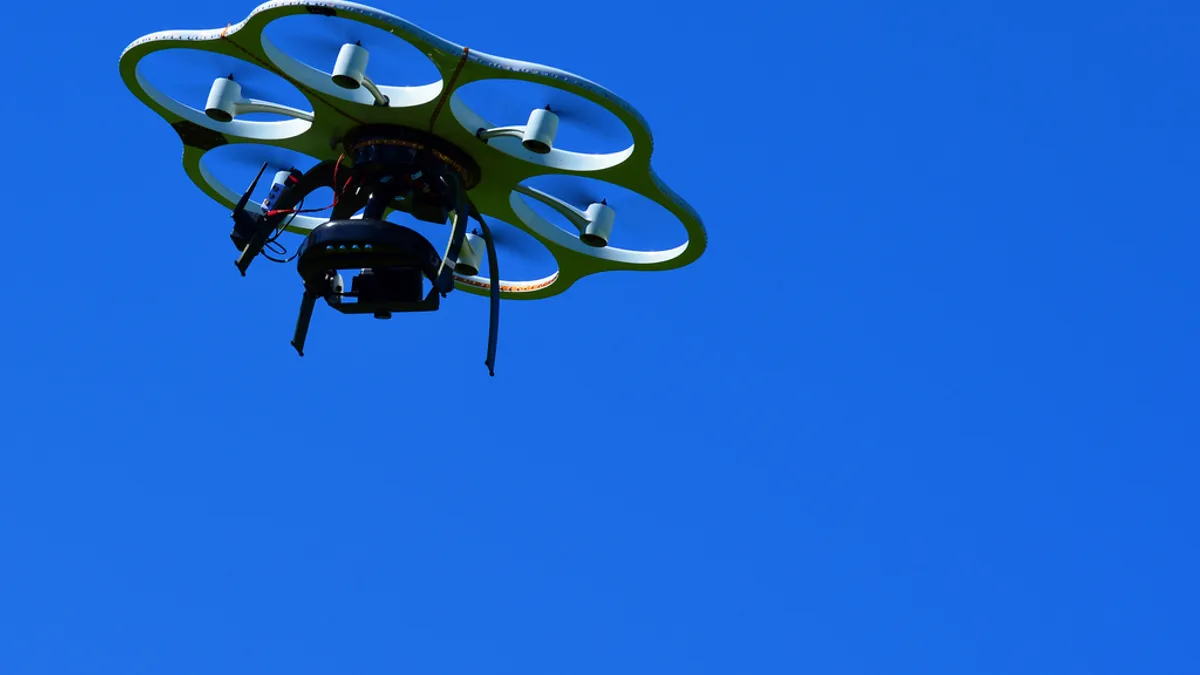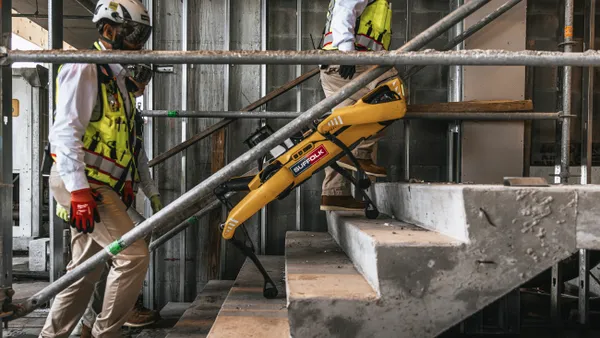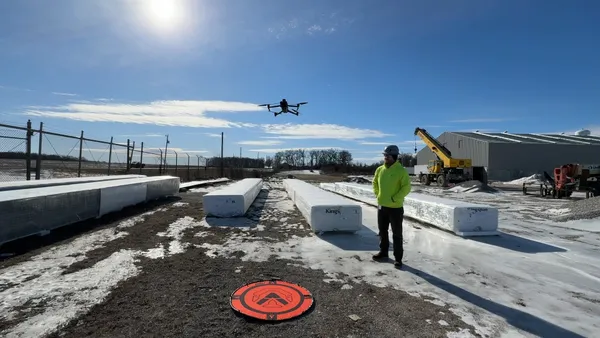Dive Brief:
- The Federal Aviation Administration has issued the first of its highly anticipated small commercial drone rules, and the agency has officially limited their use to daylight hours and a maximum altitude of 400 feet, with speed limits of 100 mph, the Engineering News-Record reported.
- The new rules, which apply only to drones weighing less than 55 pounds, also require drones be equipped with anti-collision lights for twilight operation and that operators pass a written test (every two years) and background check.
- Before the FAA issued these rules, the agency had to decide on a case-by-case basis through an exemption application process which companies could operate drones commercially. Officials said more drone regulations will be unveiled in the coming months and years.
Dive Insight:
The rules are welcomed by many commercial drone operators who have complained that without hard and fast rules, some drone operators engage in dangerous drone operations.
Additional FAA drone regulations include:
- Operators must be 16 years of age or older
- Operators must perform a preflight safety check before operation but are not required to obtain an FAA airworthiness certification for the drone
- Drones cannot be flown over people unless they're part of the drone operation or are covered by a structure or in a vehicle
- Operators must keep the drone in their line of sight
FAA officials said operators can seek exemptions to any part of this first round of drone rules, which take effect 60 days after publication in the Federal Register, with the exception of weight, altitude and speed requirements.
Drones have emerged as a game-changing technology in the construction industry due to their ability to monitor construction sites, take photos, collect information, and then send that back to the project managers or design team.
In an April report, the Association for Unmanned Vehicle Systems International (AUVSI) found that the construction and infrastructure industries were two of the biggest users of drones and that those two sectors combined accounted for almost 40% of FAA-approved exemptions. According to a ForConstructionPros.com's analysis of AUVSI data, Florida-based construction and infrastructure businesses snagged the most exemptions (192), followed by California (191) and Texas (166).
As part of a National Association of Home Builders/Wells Fargo Housing Market Index survey, the NAHB found that the bigger the builder, the more likely it is to have an interest in using drones as part of its operations. The survey revealed that only 12% of builders with fewer than six unit starts in 2015 had used a drone in the course of business, while 43% of builders with 100 starts or more had.













